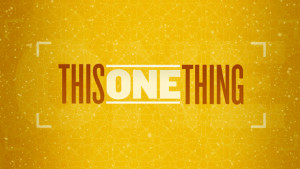 Researching your desired job can also help you identify your unique positioning. Looking at job postings can help, but you should also consider going further in-depth. These sites can help:
Researching your desired job can also help you identify your unique positioning. Looking at job postings can help, but you should also consider going further in-depth. These sites can help:
O*NET Online (http://www.onetonline.org/)
This website was created for the U.S. Department of Labor/Employment and Training Administration by the National Center for O*NET Development. The O*NET program is “the nation’s primary source of occupational information,” according to the site. It contains information on hundreds of occupations and is available to job seekers at no cost.
Every occupation requires unique knowledge, skills, and abilities. These occupational characteristics are outlined on the site. The occupational descriptions, which include descriptions of day-to-day work, along with qualifications and interests of the typical worker, allow job seekers to identify unique positioning opportunities for themselves in their job search.
You can also access the O*NET® Interest Profiler, a free tool (available for immediate download) to assess your occupational interests. The tool offers personalized career suggestions based on your interests and level of work experience.
Access the tool here: http://www.onetcenter.org/IP.html
My Next Move (http://www.mynextmove.org/)
You can start your research on an O*NET affiliated site, My Next Move. The site is an interactive tool for job seekers to learn more about career options. It includes descriptions, skills, and salary information for more than 900 professions. You can identify careers through a keyword search, by browsing industry classification, or through the O*NET Interest Profiler.
My Next Move is maintained by the National Center for O*NET Development under the sponsorship of the U.S. Department of Labor/Employment and Training Administration.
When you identify a profession, you can assess the knowledge, skills, and abilities required for success in the role. These can often provide guidance for positioning yourself. The “Personality” and “Technology” sections also give insight into your personal positioning.
The “On the Job, You Would” information includes common job functions. Look to see if these are areas where you excel — this can be a point of differentiation.
Also, check out the “Also Called” information under the occupation for related job titles you can use in your personal positioning tagline.
America’s Career InfoNet (http://www.careerinfonet.org/)
This website is affiliated with the U.S. Department of Labor’s CareerOneStop program. The website includes occupation and industry information, salary data, career videos, education resources, self-assessment tools, and career exploration assistance.
Occupational Outlook Handbook (http://www.bls.gov/ooh/)
The Occupational Outlook Handbook (OOH) provides information on what workers do, working conditions, what qualifications are required for success in the position, pay, job outlook, similar occupations, and sources of additional information for research for more than 300 occupational profiles.
To find an occupation, browse the occupational group of interest on the left-hand side of the website, or use the “A-Z Index” (if you know the specific occupation). You can also enter a job title into the “Search Handbook” box at the top of the site. You can also search for occupations by pay range, education level, training, projected number of new jobs, and projected job growth rate — using the “Occupation Finder” or occupation selector drop-down menus on the homepage. If you can’t find an occupation you are interested in, look in the alphabetical index, using similar occupational titles to search for an occupation.
Glassdoor (http://www.glassdoor.com/)
You can also research your prospective employer to identify how to effectively position yourself to work at that specific company. Glassdoor is an excellent way to assess what is important to the employer and how you might fit in.
Creating Your Positioning
The first step is a brainstorming exercise. Make a list of possible attributes, values, and differentiators based on the exercises above and your research. Brainstorm first — don’t judge or evaluate.
Then, you get to decide what your personal positioning is. Look through the words and phrases you’ve identified, and see what stands out. You may be many things, but pick one to emphasize. It may help you to ask yourself: If I were creating my ideal career, I would ____________.
If you are still having trouble identifying your positioning, use this idea from Brian Kurth, author of “Test Drive Your Dream Job.” Create a collage of your interests — quotes, photos, words, and inspiration from magazines, newspapers, and materials you find online. You can even create a Pinterest board for this. Then, mine that information to find the “theme” to your personal positioning.
Now, it’s time to actually create your positioning. Your personal position has two parts: A tagline and a full positioning statement. Your personal positioning should be authentic, relevant, compelling, and differentiate you from others.
The full positioning statement has an immediately clear focus supported by 3-5 main points that further emphasize that focus. This positioning statement will be used throughout your resume, LinkedIn profile, and the interviewing process.
When developing your positioning statement, consider these five areas:
Who is your target employer? (industry, size of company, public/private/non-profit)
What problem or issue are they hiring to solve?
What results can the employer expect by hiring you? In other words, what solution do you provide?
What proof do you have that you can deliver results?
What sets you apart from other candidates? What makes you different or memorable?
Your personal positioning tagline is one sentence – ideally, 5-10 words in length. It should be easily understandable and easy to remember.
This formula can be used to create your tagline:
Job Title à Differentiator
This may be expressed without pronouns. For example:
Big Four Accountant With Operations Experience in Fortune 500 Companies
Security Guard with Anti-Terrorist Training and Ability to Identify Hidden Patterns
Hazmat Manager with Mechanical Engineering Degree From University of Virginia
Your full positioning statement is that tagline, but backed up by qualifications, accomplishments, and/or evidence. The full statement might be a single sentence, or it might be 3-5 sentences in length. Offer supporting details to back up your accomplishment claims.
Both should be clear and concise and written in present tense. They should highlight your expertise and unique abilities. You can “name drop” by including well-known companies, schools, and credentials in your positioning.
Here is a sample formula for your personal positioning statement:
Job Title à Target Audience/What You Do à Industry/Field à Achievements/Results
This is expressed as: I am a (Job Title/Profession) who (Works With Target Audience OR Who Does X/Y/Z) in the (Industry/Field) to (Highlight Accomplishments or Results).
For example:
I am a public relations specialist who provides media relations and race promotion services to the cycling community to help races attract more participants, media attention, and sponsor support.
Be sure to include:
A target audience — who are the clients or customers you work with?
Your employer/industry — where do you want to work? Who do you want to work for? You can even include your desired employer’s name.
A point of difference — what sets you apart? What is the most compelling reason to choose you as a candidate? (This can be included in the “Achievements/Results” section of the personal positioning statement.)
But don’t try to stuff too much information into the statement. The positioning statement is “overstuffed” if you have more than one conjunction per sentence, or more than two punctuation marks (commas or semicolons).
Also, don’t confuse big words with effective positioning. Choose your words carefully. When possible, incorporate in keywords — nouns or phrases that can be picked up through online searches and are prominently used in applicant tracking systems.
Do’s and Don’ts
Here are things you should do:
Do make sure your positioning reflects your personality.
Do incorporate in keywords (nouns, industry-specific terminology, and skills) into your personal positioning.
Do be authentic. Make sure your personal positioning reflects your personal values, qualifications, and attributes.
Here are some things you should not do:
Don’t go on and on. Don’t tell your whole life story. Get to the point quickly.
Don’t be too general. One of the biggest mistakes with your personal position is not being specific enough. The more specific you are, the more effective your personal positioning will be.
Don’t be boring. You need to get the reader’s attention! Be interesting.
Positioning Can Make It Easier to Find a Job
Recruiters and hiring managers need help knowing what kind of position you’re focused on. It’s harder to find a job when you don’t know what kind of job you want. Conversely, it is easier to find a job if you know what kind of job you want.
There are fewer opportunities for average performers to be found in the hiring process, but there are tremendous opportunities for stars. Positioning helps you identify where you can be a star performer and then make the case (through your work and your career communication documents) to support this claim.
The next step is to align your job search with your positioning. Make sure your resume and interview preparation supports this and makes your case.
Build Your Personal Position Before You Start Looking for a Job
Many job seekers develop their personal positioning when they are looking for a new job. But personal positioning can help you be more effective — and visible — in your current job.
In your current job, get attention for the work you’re already doing:
Offer to do a presentation showing your (or your group’s) accomplishments for the quarter.
Contact your company’s communications department to see if they are interested in doing an article for the company newsletter on a recent project.
Make sure you are keeping an “Accomplishments Journal” documenting your current career successes.
Develop your own communications plan in your current position. Increase your personal visibility by speaking, writing, and participating in social media. Once you’ve identified your personal positioning, see how you can incorporate it into your everyday work life. This will make you worth more to your current employer (remember, superstars stand out!) and make you more attractive as a job candidate when it is time for you to look for a new position.
